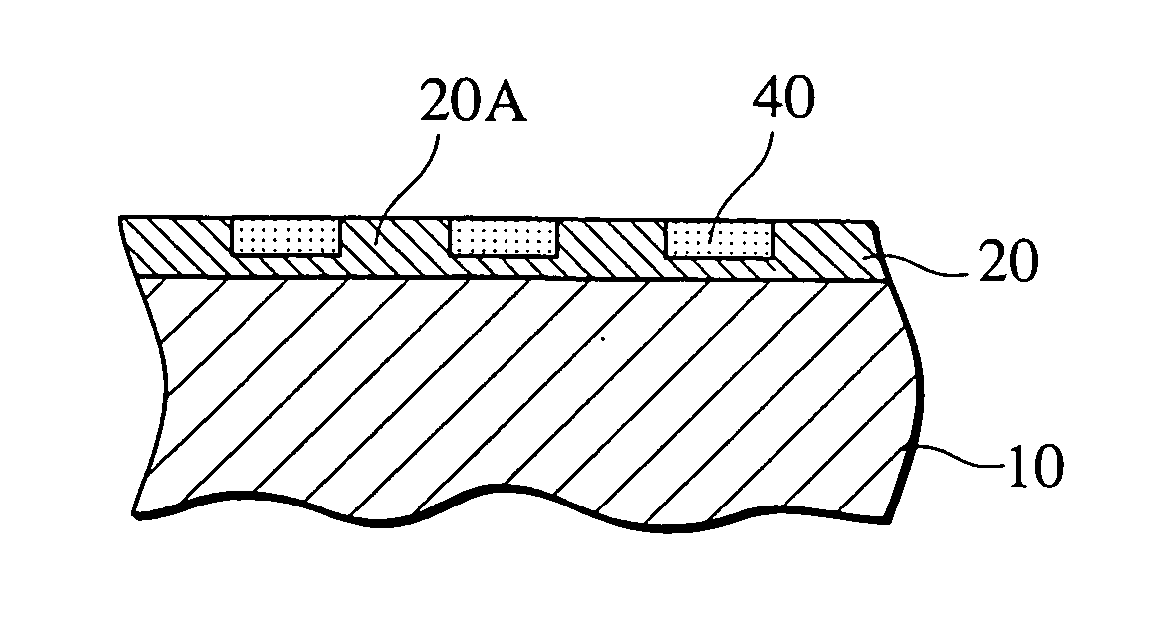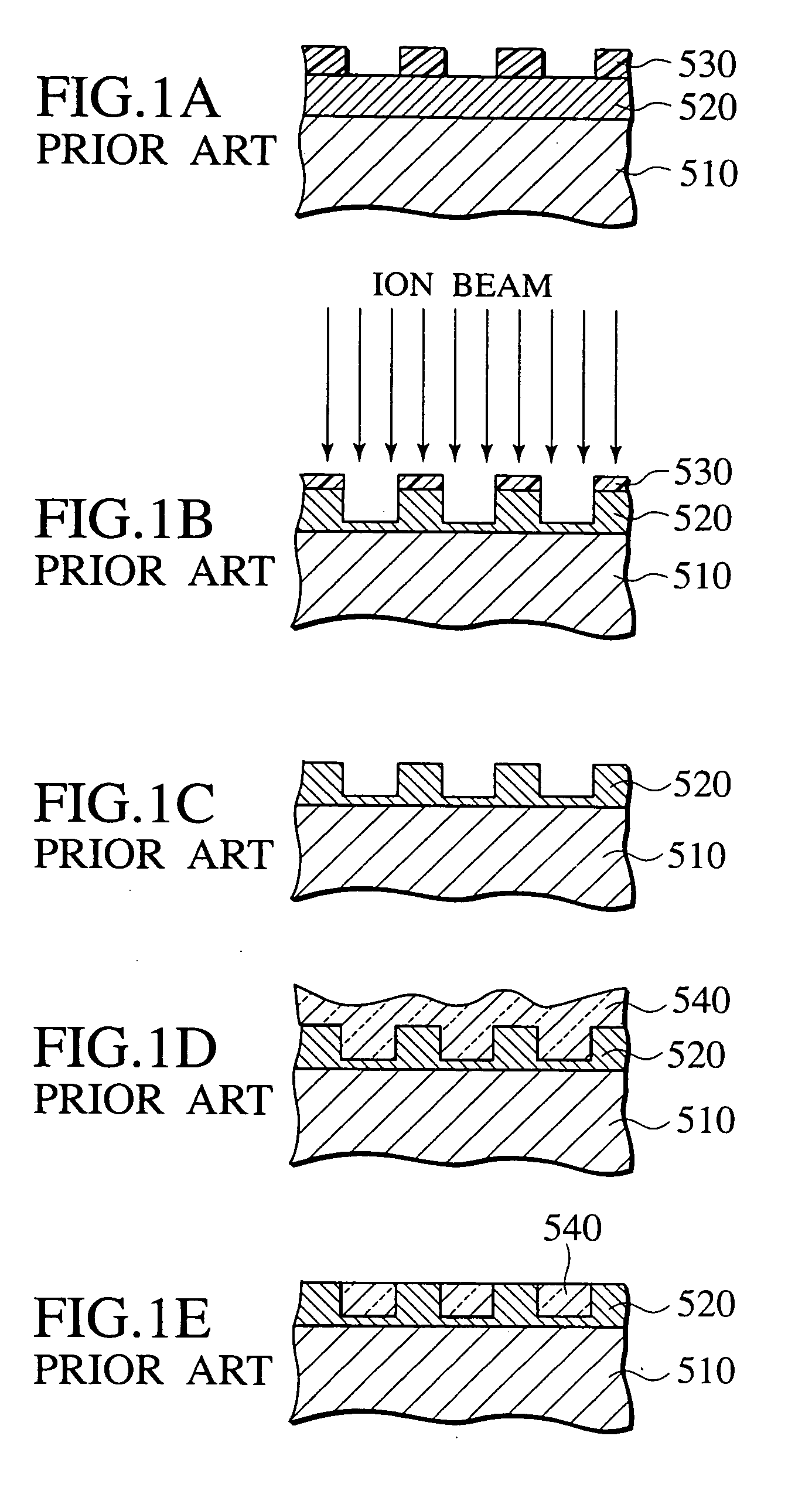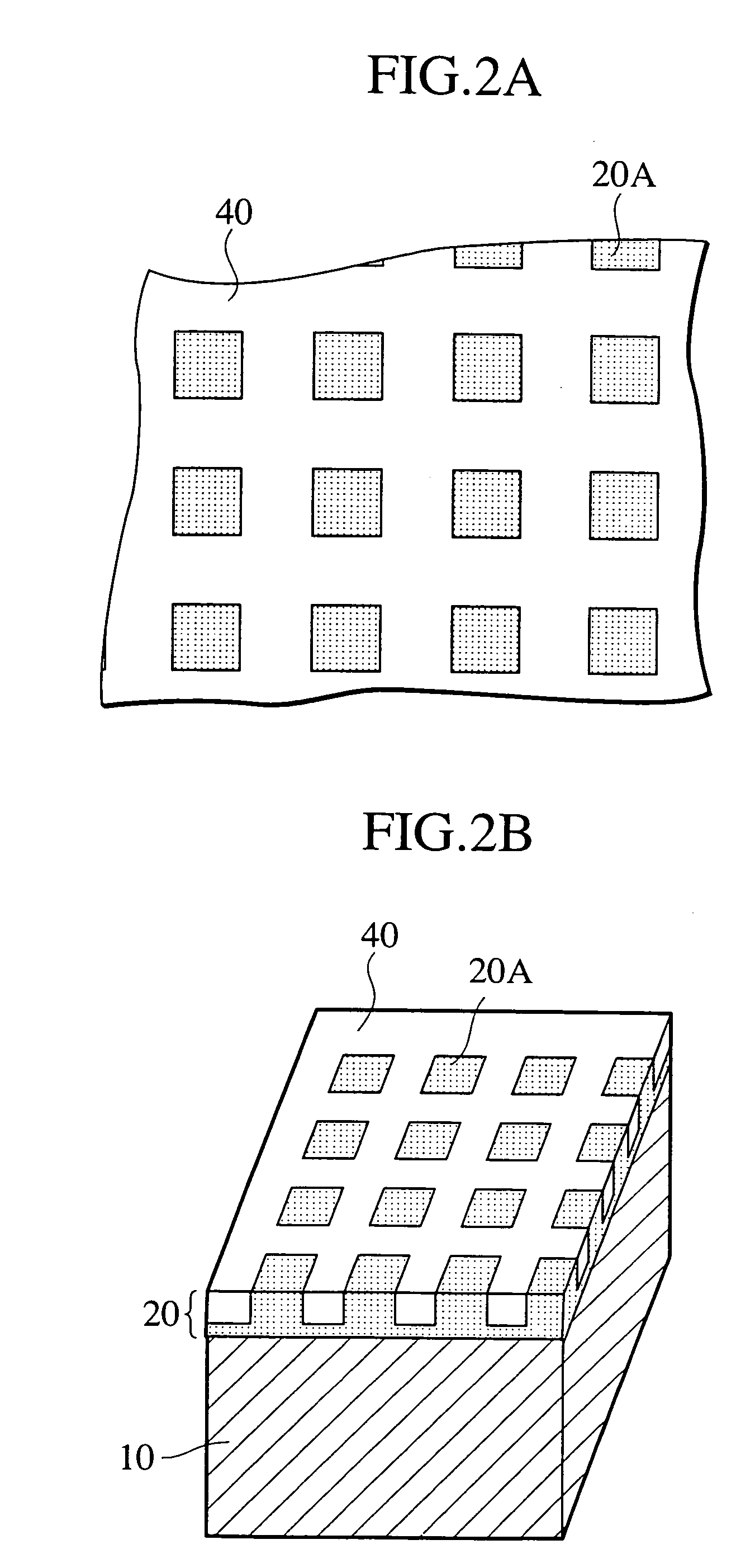Method of patterning magnetic products using chemical reaction
a magnetic product and chemical reaction technology, applied in the field of high-density magnetic recording technology, can solve the problems of reducing the quantity of magnetization per bit, limiting the resistance to thermal fluctuation, and loss of magnetization information
- Summary
- Abstract
- Description
- Claims
- Application Information
AI Technical Summary
Problems solved by technology
Method used
Image
Examples
first embodiment
[0052] [First Embodiment]
[0053] FIG. 2A is a partial plan view showing a structure of a magnetic recording medium according to a first embodiment of the present invention; and FIG. 2B is a perspective view of the same.
[0054] The magnetic recording medium of the first embodiment of the present invention is a so-called patterned medium. As shown in FIGS. 2A and 2B, this magnetic recording medium includes a recording layer 20 on a substrate 10. The recording layer 20 includes a ferromagnetic material region 20A and a nonferromagnetic material region 40. The ferromagnetic material region 20A contains any of Fe, Co and Ni, and has dotted exposed portions. The nonferromagnetic material region 40 surrounds at least an upper layer portion of the ferromagnetic material region 20A. Substantial recording regions are separated from each other by the nonferromagnetic material region 40. Here, the nonferromagnetic region means a region having lost magnetism at least as a ferromagnetic material, a...
example 2
[0093] (Example 2)
[0094] A patterned medium sample, in which ferromagnetic material CoPt regions are surrounded by antiferromagnetic material CoF.sub.2, was prepared. That is, first, CoPt was deposited by 20 nm on a Si substrate by a sputtering method. Then, resist was coated in a thickness of about 1.0 .mu.m on this CoPt film by spin coating, and a resist pattern as shown in FIG. 5A was formed after batch exposure and development. In this example, a size of each ferromagnetic material region on a surface layer was set to 2.0 .mu.m square.
[0095] A surface of this sample was exposed in F radicals generated under conditions similar to those of the example 1 for about 30 seconds while being maintained at room temperature. Then, the resist was removed by using an oxygen ashing apparatus.
[0096] When a MFM image of this sample was observed, a magnetic pattern equivalent to a resist pattern as shown in FIG. 5B was obtained. That is, regarding a region covered with a resist film, a MFM imag...
example 3
[0099] (Example 3)
[0100] In order to form finer patterns of the ferromagnetic material region than that of the above-described example 2, electron beam (EB) writing was carried out in exposure of resist. Accordingly, fine ferromagnetic material region patterns of about 80 nm square were formed. Other conditions were the same as those of the above example 2, and by using these conditions, a sample was prepared. That is, CoPt was deposited by 20 nm on a Si substrate by sputtering. Then, nega-resist was coated thereon, a minute resist pattern was formed by EB writing, and exposure thereof in F radicals was carried out for about 30 seconds at room temperature. Thereafter, the resist was removed.
[0101] An obtained sample was observed by MFM, and a single color image was obtained in a ferromagnetic material region. That is, it was verified that by reducing the ferromagnetic material region to a size of about 80 nm square, a single magnetic domain state was set in this region. When magneti...
PUM
| Property | Measurement | Unit |
|---|---|---|
| depth | aaaaa | aaaaa |
| thickness | aaaaa | aaaaa |
| Neel temperatures | aaaaa | aaaaa |
Abstract
Description
Claims
Application Information
 Login to View More
Login to View More - R&D
- Intellectual Property
- Life Sciences
- Materials
- Tech Scout
- Unparalleled Data Quality
- Higher Quality Content
- 60% Fewer Hallucinations
Browse by: Latest US Patents, China's latest patents, Technical Efficacy Thesaurus, Application Domain, Technology Topic, Popular Technical Reports.
© 2025 PatSnap. All rights reserved.Legal|Privacy policy|Modern Slavery Act Transparency Statement|Sitemap|About US| Contact US: help@patsnap.com



